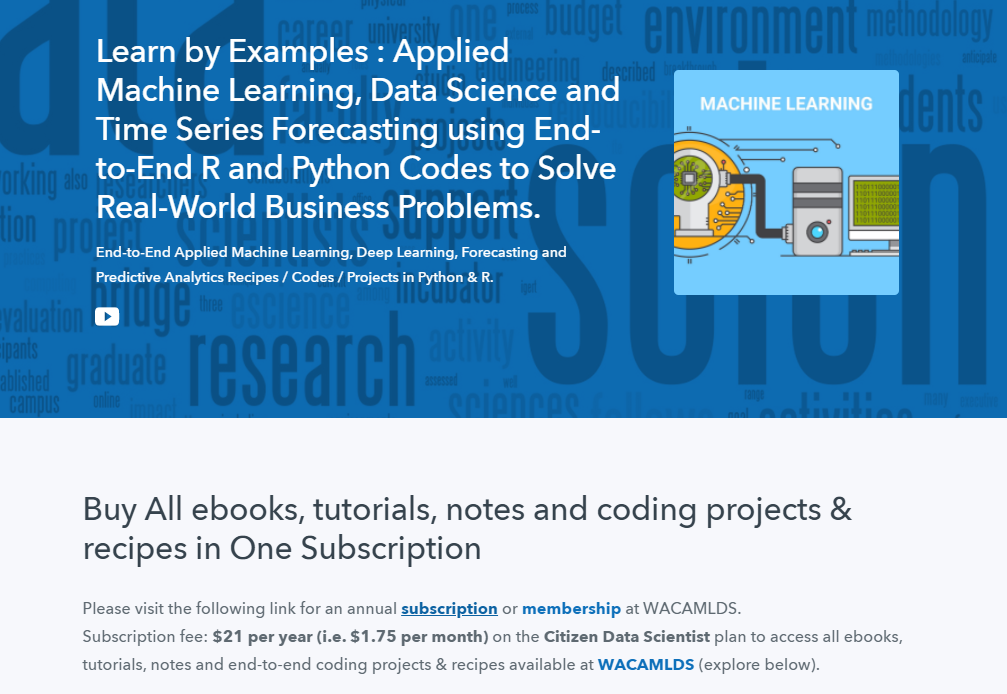Group Pandas Data By Hour Of The Day
Preliminaries
/* Import libraries */
import pandas as pd
import numpy as npCreate Data
/* Create a time series of 2000 elements, one very five minutes starting on 1/1/2000 */
time = pd.date_range('1/1/2000', periods=2000, freq='5min')
/* Create a pandas series with a random values between 0 and 100, using 'time' as the index */
series = pd.Series(np.random.randint(100, size=2000), index=time)View Data
/* View the first few rows of the data */
series[0:10]2000-01-01 00:00:00 40
2000-01-01 00:05:00 13
2000-01-01 00:10:00 99
2000-01-01 00:15:00 72
2000-01-01 00:20:00 4
2000-01-01 00:25:00 36
2000-01-01 00:30:00 24
2000-01-01 00:35:00 20
2000-01-01 00:40:00 83
2000-01-01 00:45:00 44
Freq: 5T, dtype: int64
Group Data By Time Of The Day
/* Group the data by the index's hour value, then aggregate by the average */
series.groupby(series.index.hour).mean()0 50.380952
1 49.380952
2 49.904762
3 53.273810
4 47.178571
5 46.095238
6 49.047619
7 44.297619
8 53.119048
9 48.261905
10 45.166667
11 54.214286
12 50.714286
13 56.130952
14 50.916667
15 42.428571
16 46.880952
17 56.892857
18 54.071429
19 47.607143
20 50.940476
21 50.511905
22 44.550000
23 50.250000
dtype: float64
Python Example for Beginners
Two Machine Learning Fields
There are two sides to machine learning:
- Practical Machine Learning:This is about querying databases, cleaning data, writing scripts to transform data and gluing algorithm and libraries together and writing custom code to squeeze reliable answers from data to satisfy difficult and ill defined questions. It’s the mess of reality.
- Theoretical Machine Learning: This is about math and abstraction and idealized scenarios and limits and beauty and informing what is possible. It is a whole lot neater and cleaner and removed from the mess of reality.
Data Science Resources: Data Science Recipes and Applied Machine Learning Recipes
Introduction to Applied Machine Learning & Data Science for Beginners, Business Analysts, Students, Researchers and Freelancers with Python & R Codes @ Western Australian Center for Applied Machine Learning & Data Science (WACAMLDS) !!!
Latest end-to-end Learn by Coding Recipes in Project-Based Learning:
Applied Statistics with R for Beginners and Business Professionals
Data Science and Machine Learning Projects in Python: Tabular Data Analytics
Data Science and Machine Learning Projects in R: Tabular Data Analytics
Python Machine Learning & Data Science Recipes: Learn by Coding
R Machine Learning & Data Science Recipes: Learn by Coding
Comparing Different Machine Learning Algorithms in Python for Classification (FREE)
Disclaimer: The information and code presented within this recipe/tutorial is only for educational and coaching purposes for beginners and developers. Anyone can practice and apply the recipe/tutorial presented here, but the reader is taking full responsibility for his/her actions. The author (content curator) of this recipe (code / program) has made every effort to ensure the accuracy of the information was correct at time of publication. The author (content curator) does not assume and hereby disclaims any liability to any party for any loss, damage, or disruption caused by errors or omissions, whether such errors or omissions result from accident, negligence, or any other cause. The information presented here could also be found in public knowledge domains.
